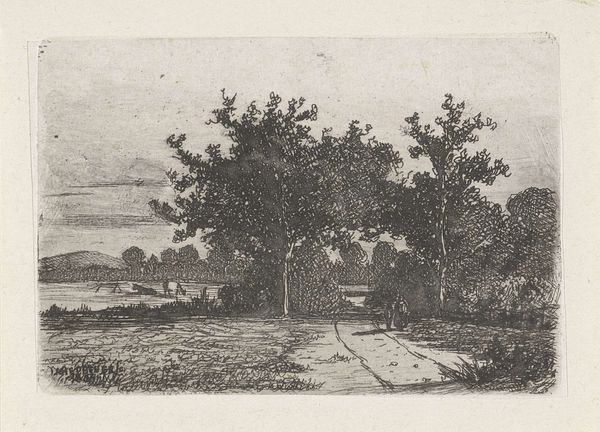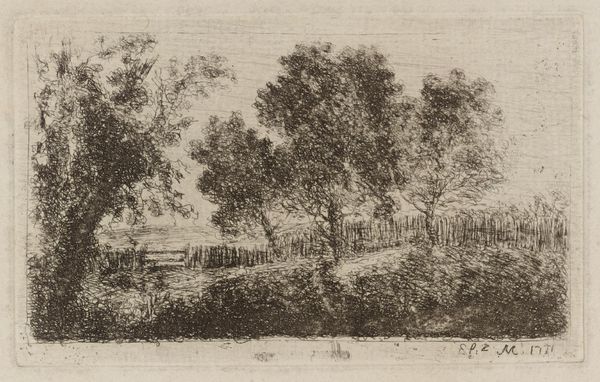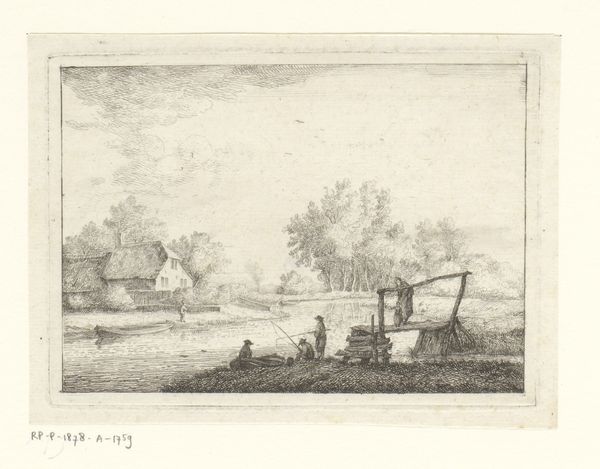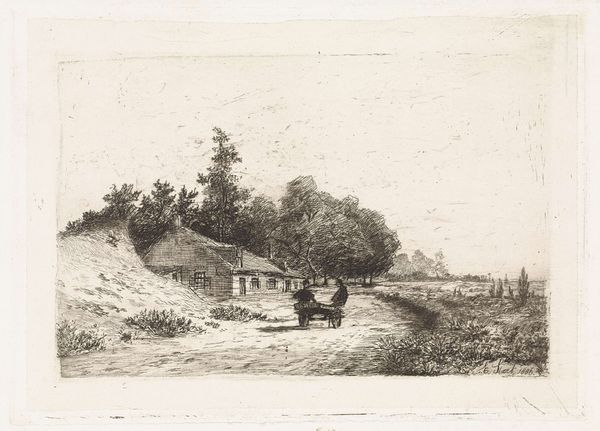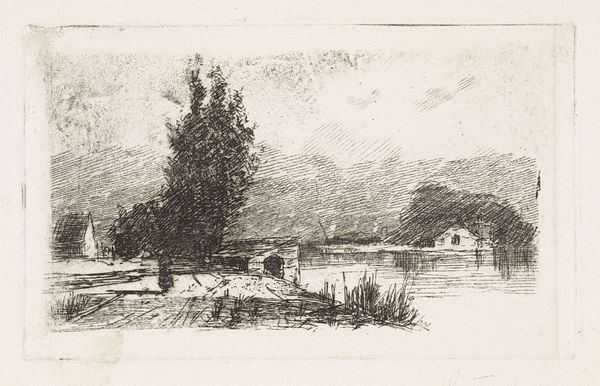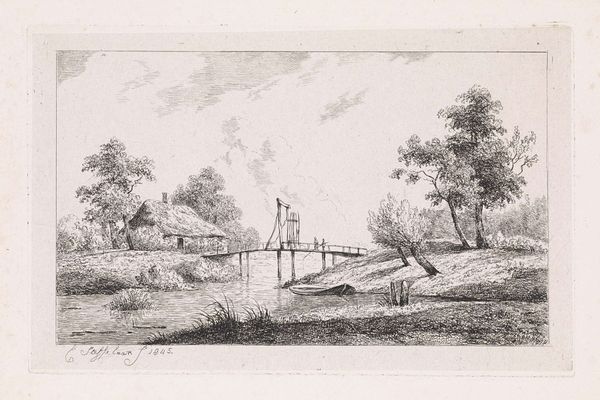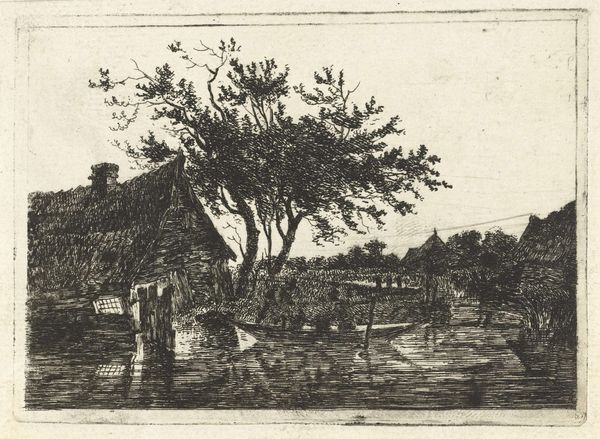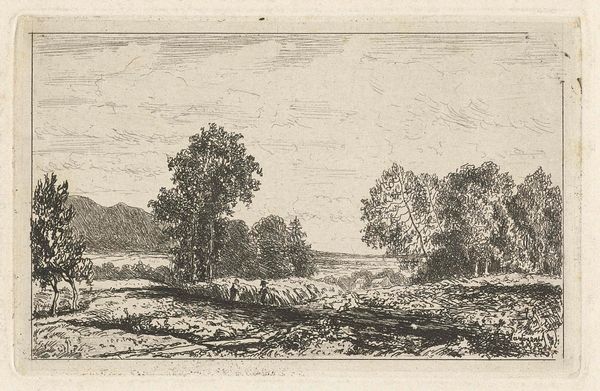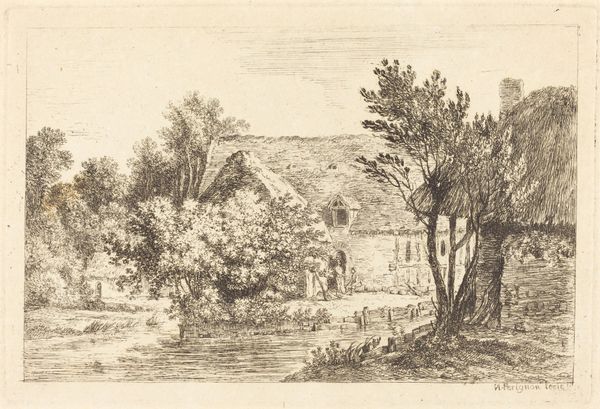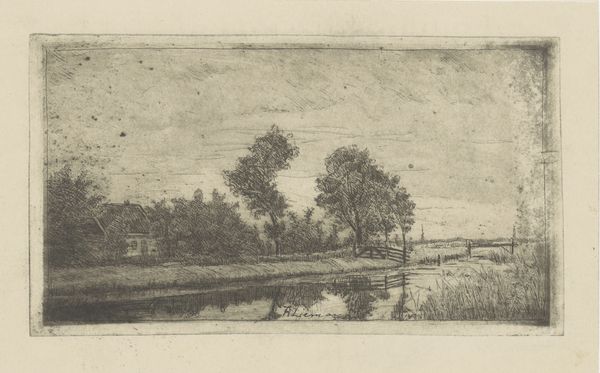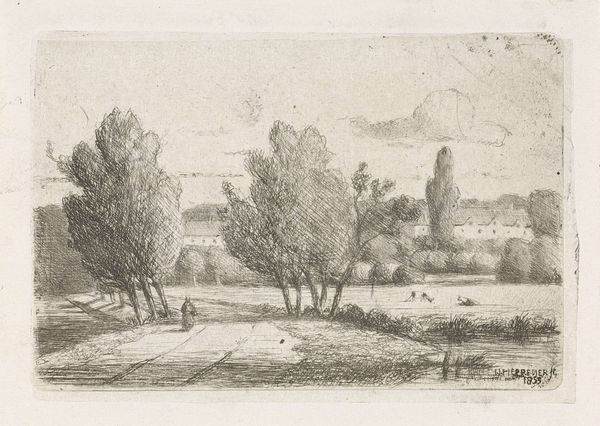
print, etching
#
dutch-golden-age
# print
#
etching
#
landscape
#
realism
Dimensions: width 65 mm, height 93 mm
Copyright: Rijks Museum: Open Domain
Curator: I'm immediately drawn to the delicate balance achieved here in Jan Heppener's "Landschap met bruggetje over een sloot," translated as "Landscape with a bridge over a ditch," dating from sometime between 1841 and 1898. The world captured in etching with remarkable detail. Editor: It's evocative, a sense of quiet isolation. The bridge feels like a threshold, inviting or barring access, I can’t quite decide. Curator: Realism flourished at this time. What is often left out of the Realist dialogue, however, is an emphasis on labor and the representation of those relegated to the margins of industrializing societies. Note the solitary cottage tucked in the background. How does that inform our understanding of a bridge between seemingly idyllic spaces and lived rural experiences? Editor: I appreciate that perspective. Looking at the etching as a technical exercise, observe how Heppener modulates light. He contrasts denser clusters of lines to build mass, look to the treeline, with the sparser lines to create open sky. It's a study of textural gradients, the visual semiotics constructing our perception of distance. Curator: Precisely. He is not merely depicting, he's encoding specific socioeconomic cues through chosen detail. Consider also the Dutch context; land and water management— who controls access to it, who benefits—were fiercely contested issues at the time. This image reads to me less as simple scenery and more a subtle comment on those structures of power. Editor: Agreed. It invites such rich contemplation. Heppener manipulates spatial perspective and texture expertly. That water—it almost vibrates thanks to that intricate linework. The piece exemplifies how limited tonality nonetheless contains remarkable complexity of structure. Curator: Exactly. A sociohistorical reading enriches my perspective even on such formal mastery. Editor: And your perspective deepens my understanding and enjoyment of form and function as the piece continues to grow on me.
Comments
No comments
Be the first to comment and join the conversation on the ultimate creative platform.


